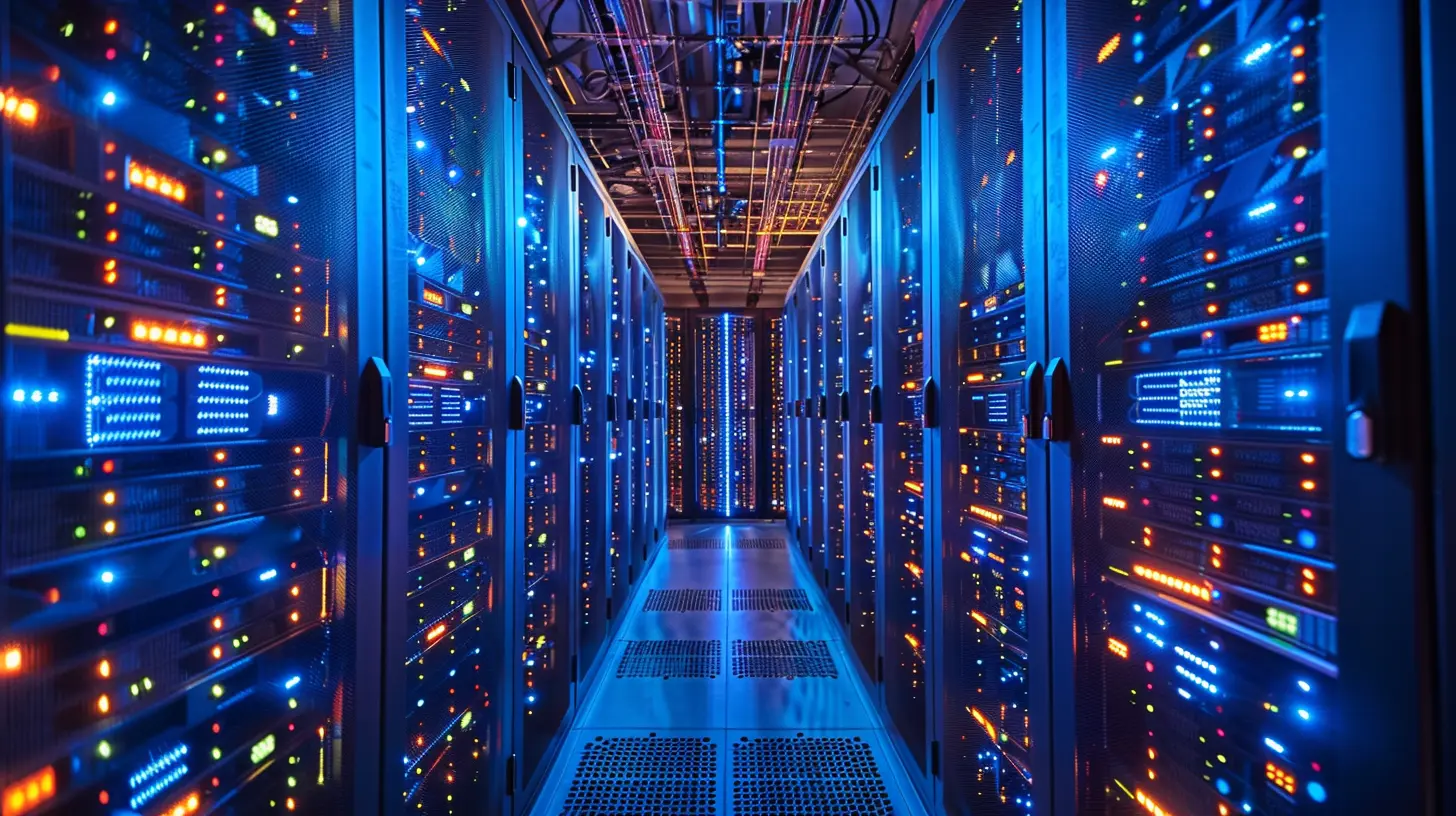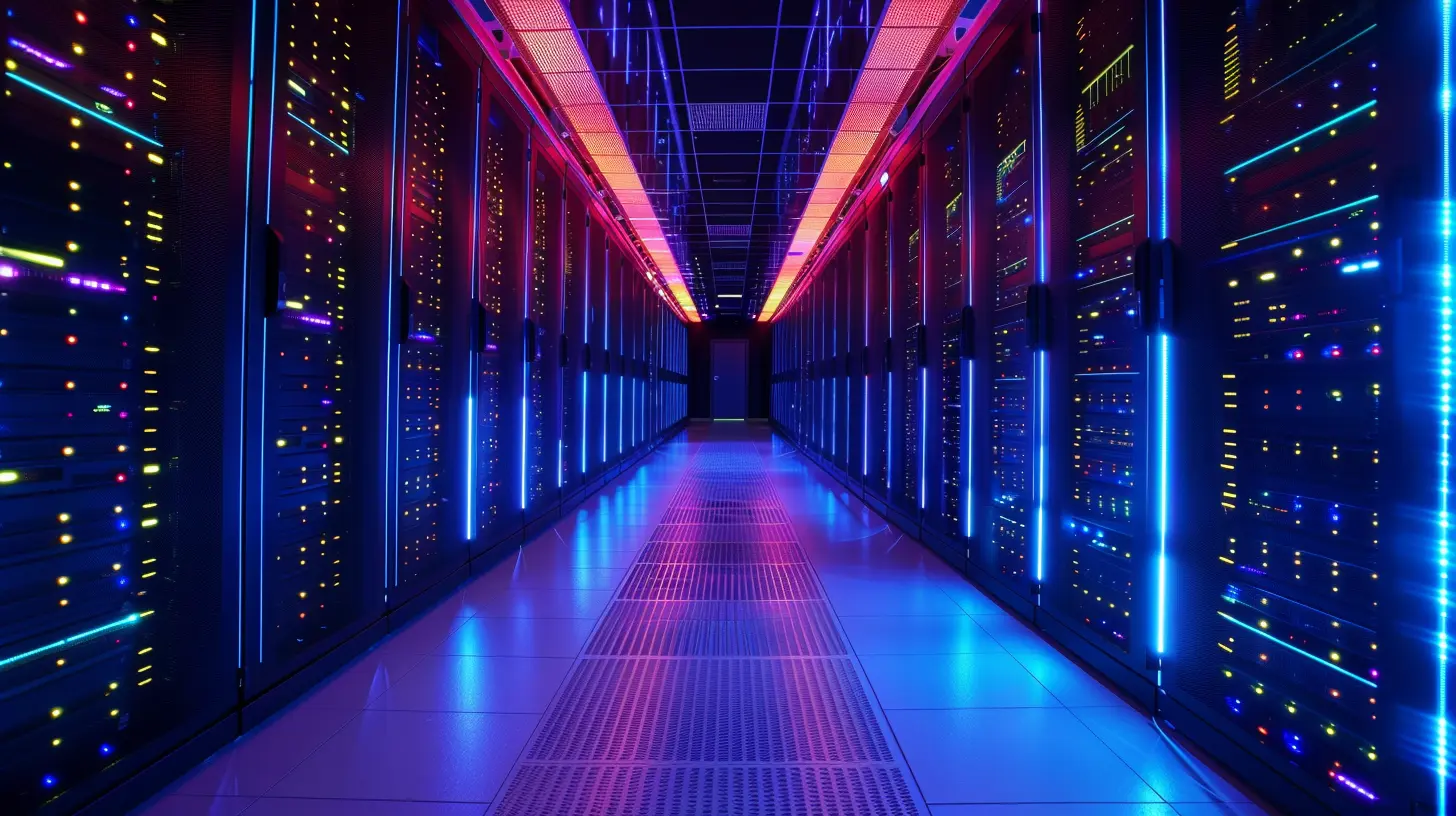Edge Computing and Networking: A New Frontier
16 July 2025
The digital world is evolving at a breakneck pace, and with it, the way we process and transmit data is undergoing a massive transformation. Enter Edge Computing and Networking—a revolutionary shift that is changing the way businesses, devices, and users interact with data in real-time.
If you've ever wondered why your smart devices respond instantly or how autonomous cars make split-second decisions, you're about to discover the magic behind it all. Let’s break it down in simple terms. 
What Is Edge Computing?
Imagine you’re trying to stream your favorite show, but every few seconds, it buffers. Annoying, right? That happens because your data has to travel all the way to a central cloud server miles away and back before you get your response. Edge computing solves this by bringing the processing power closer to you—right at the "edge" of the network.Instead of relying on distant cloud data centers, edge computing processes data near the source (on devices, local servers, or nearby network nodes). This reduces latency, speeds up response times, and improves overall performance.
The Key Benefits of Edge Computing
- Reduced Latency: Since data doesn’t have to travel far, processing happens almost instantly.- Bandwidth Savings: Fewer data transfers mean less congestion on networks.
- Improved Security: Keeping data local reduces risks of cyber threats associated with centralized cloud storage.
- Scalability: Businesses can process data efficiently without overloading cloud servers.
This makes edge computing perfect for applications like autonomous vehicles, smart cities, healthcare monitoring, and industrial automation. 
The Role of Networking in Edge Computing
Edge computing wouldn’t be possible without a robust networking infrastructure to support it. Traditional networks weren’t built for this kind of distributed architecture. That’s where edge networking comes in.Edge networking ensures that data moves efficiently between devices, local servers, and cloud solutions. It relies on technologies like 5G, IoT (Internet of Things), SD-WAN (Software-Defined Wide Area Network), and Fog Computing to power this new era of data processing.
Key Components of Edge Networking
1. 5G Networks – Super-fast wireless connectivity with ultra-low latency.2. IoT Devices – Sensors and smart gadgets that generate and process data at the edge.
3. SD-WAN – Software-based networking that optimizes traffic flow and prioritizes data routes.
4. Fog Computing – A layer between cloud and edge that enhances processing efficiency.
Together, these technologies create a seamless digital ecosystem where devices can communicate with each other instantly without depending on a central cloud. 
Edge Computing vs. Cloud Computing
Now, you might be wondering—does this mean cloud computing is dead? Absolutely not! Cloud computing still plays a crucial role, but edge computing enhances it rather than replaces it.Here’s a quick comparison:
| Feature | Cloud Computing | Edge Computing |
|---------|----------------|---------------|
| Location | Centralized data centers | Distributed, near devices |
| Latency | Higher due to distance | Extremely low |
| Bandwidth Usage | Heavy network traffic | Reduced network strain |
| Security | Potential risks from central storage | More localized protection |
In many cases, edge and cloud computing work hand in hand—edge computing handles real-time processing, and the cloud is used for storage and deep analysis. 
Real-World Applications of Edge Computing
Edge computing is not just a futuristic concept—it’s already transforming industries today. Let’s take a look at some real-life examples:1. Autonomous Vehicles
Self-driving cars need to make split-second decisions to detect pedestrians, avoid collisions, and follow traffic rules. Edge computing processes data instantly from cameras and sensors, ensuring a safe driving experience.2. Smart Cities
Traffic lights, surveillance systems, and public transport rely on real-time data to function efficiently. Edge computing helps reduce congestion, optimize energy usage, and improve public safety.3. Healthcare & Remote Monitoring
Wearable devices like smartwatches and medical sensors track real-time health data and alert doctors if something goes wrong. This helps monitor conditions like heart disease, diabetes, and sleep disorders without needing patients to visit hospitals frequently.4. Manufacturing & Industrial Automation
Factories use edge computing for predictive maintenance, meaning machines can detect potential failures before they happen, reducing downtime and saving costs.5. Gaming & Augmented Reality (AR)
With the rise of cloud gaming and AR experiences, edge computing ensures low latency for a smooth and immersive experience—whether you’re battling it out in an online game or using AR for shopping.Challenges of Edge Computing
As promising as edge computing is, it’s not without its challenges. Here are some of the major hurdles:- Security Risks: More edge devices mean more potential entry points for cyber threats.
- Data Management Complexity: Handling distributed data across multiple edge locations can get tricky.
- Infrastructure Costs: Setting up edge networks requires investment in hardware and software.
- Limited Processing Power: Edge devices have fewer resources compared to centralized cloud data centers.
Despite these challenges, companies are actively working on enhanced security measures, better device management, and cost-effective solutions to make edge computing more accessible.
The Future of Edge Computing and Networking
We’re just scratching the surface of what edge computing can do. As 5G becomes more widespread, expect edge computing to grow even faster.Here’s what the future holds:
1. More AI-Powered Edge Devices – AI and machine learning will make edge devices smarter, faster, and more autonomous.
2. Stronger Edge Security – Encryption, zero-trust models, and AI-driven security protocols will enhance protection for edge networks.
3. Decentralized Computing Models – Processing data without relying on big cloud providers could make computing more democratic and efficient.
4. Seamless Edge-Cloud Integration – Businesses will use a hybrid approach, balancing edge speed with cloud storage.
Edge computing is no longer a distant dream—it’s happening now. And as it continues growing, our everyday gadgets, businesses, and industries will become smarter and more responsive than ever.
Conclusion
Edge computing and networking represent a new frontier in technology, reshaping the way we process and use data in real time. It reduces latency, enhances security, decreases bandwidth usage, and brings intelligence closer to the source.Whether it's self-driving cars, smart cities, healthcare, gaming, or industrial automation, edge computing is already making waves across various industries.
While there are challenges to address, the future holds tremendous potential. As networking technologies improve, edge computing will become even more seamless and efficient, leading to a smarter, more connected world.
So, the next time your smart assistant responds instantly or your autonomous car makes a flawless turn, just remember—that’s the power of edge computing at work!
all images in this post were generated using AI tools
Category:
NetworkingAuthor:

Gabriel Sullivan
Discussion
rate this article
1 comments
Anna McKittrick
Edge computing isn't just a trend; it's a revolution. Embracing it means embracing efficiency, speed, and innovation. Don't get left behind—adapt or fade away!
July 31, 2025 at 11:50 AM

Gabriel Sullivan
Thank you for your insightful comment! You're absolutely right—edge computing is transforming the landscape of technology, driving efficiency and innovation. Embracing this shift is essential for staying competitive.


